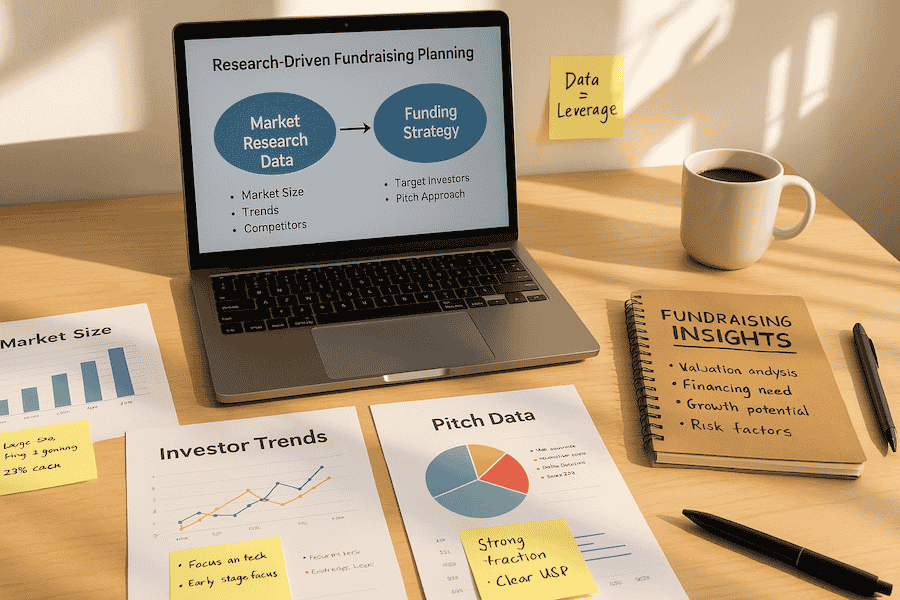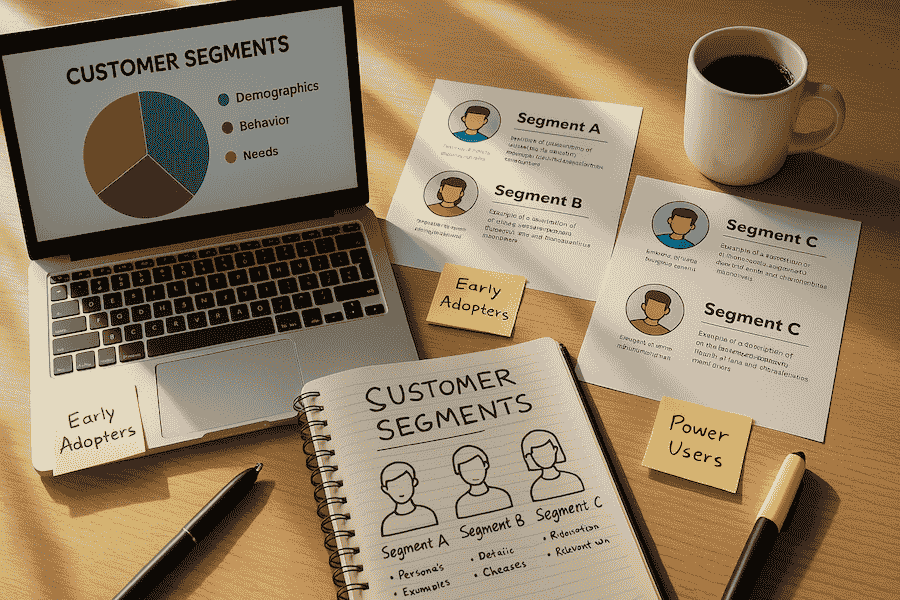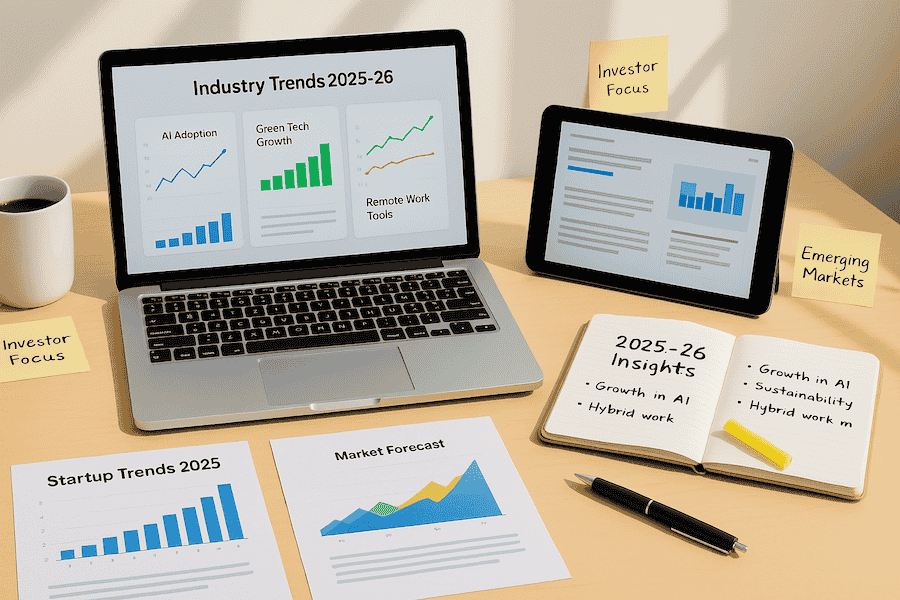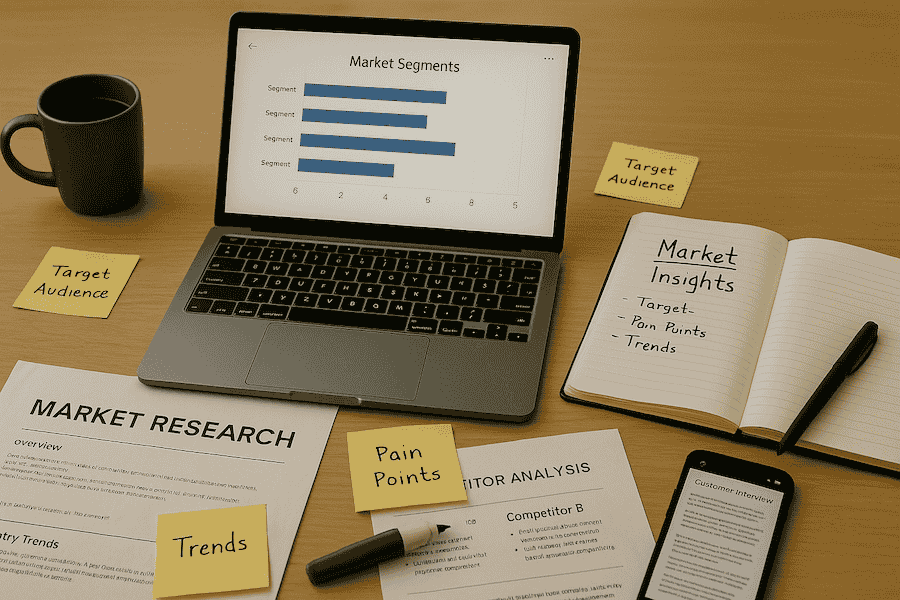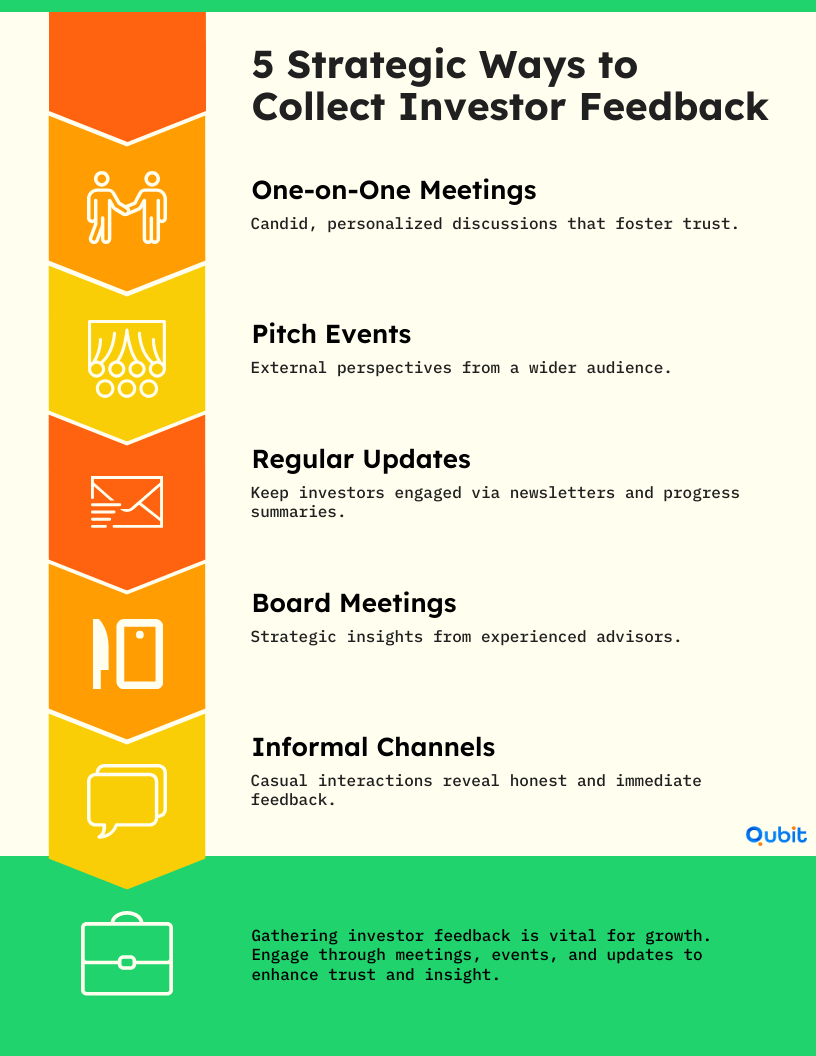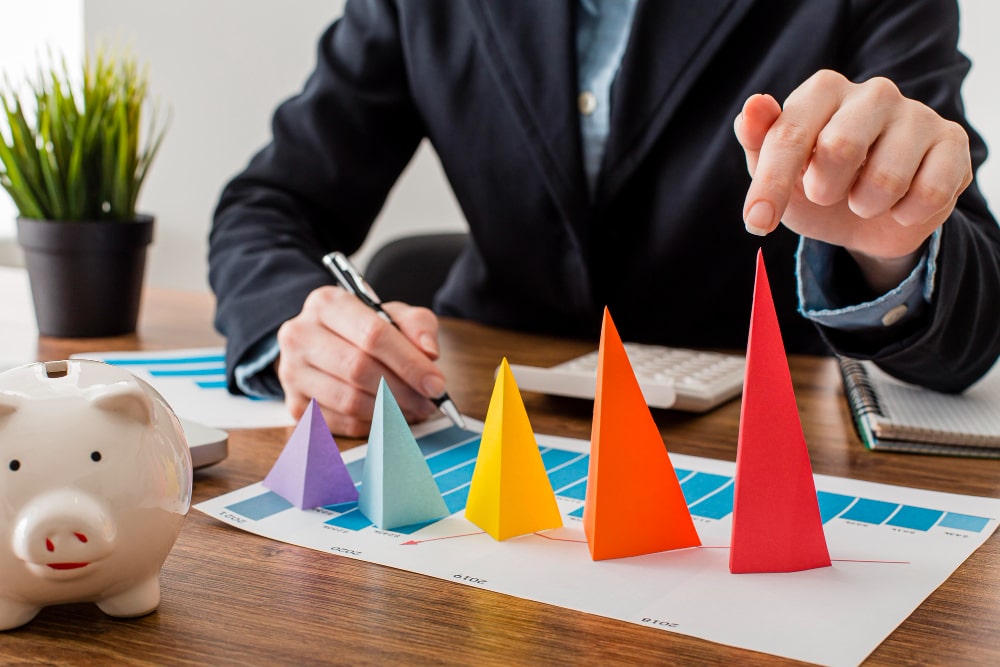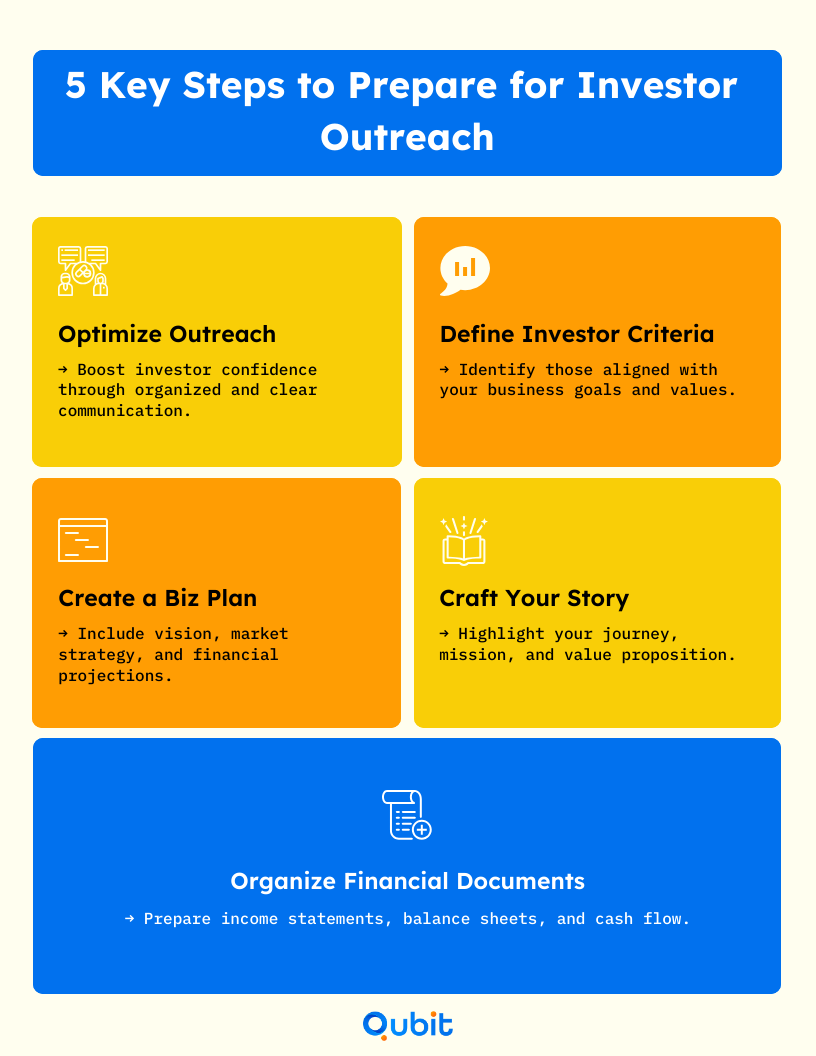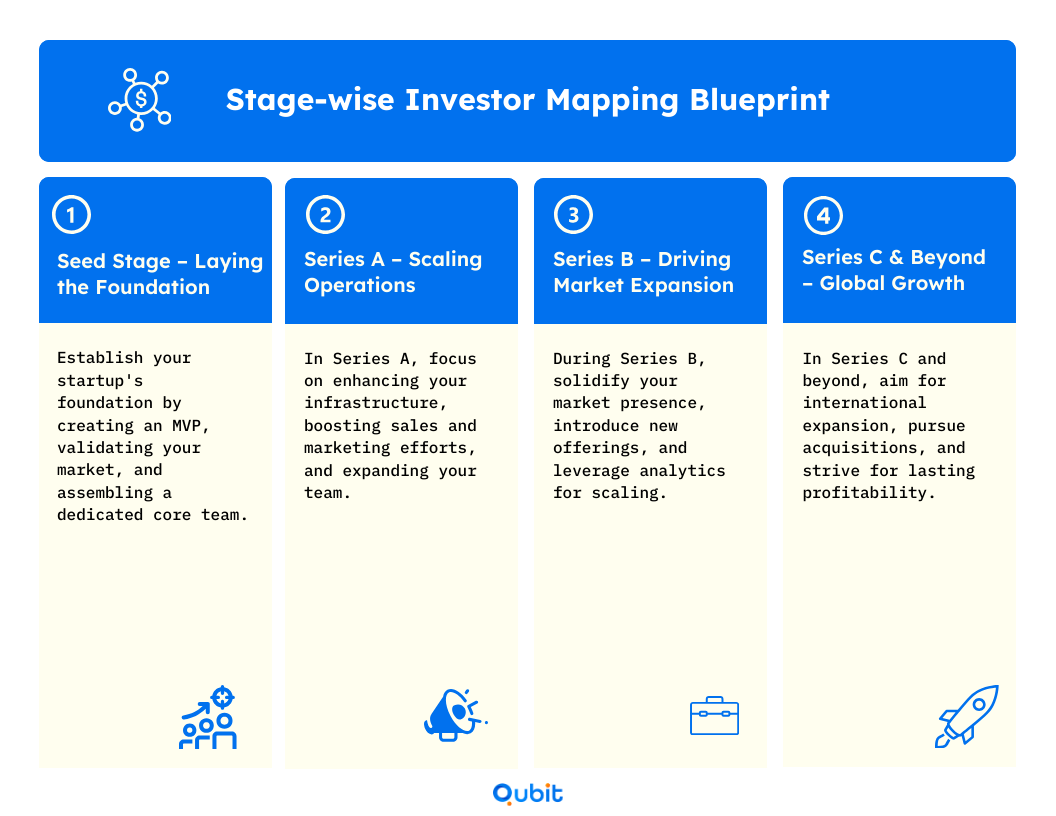For any startup aiming to thrive in a crowded market, the knowledge of what the competition is up to is paramount. Competitive analysis, the process of evaluating your rivals to uncover strengths, weaknesses, and opportunities, lays the foundation for strategic positioning. Without this insight, businesses risk falling behind or missing key opportunities to differentiate themselves.
Knowing how to identify competitors is the first step in crafting a winning strategy. This essential skill not only helps startups pinpoint their biggest rivals but also equips them to anticipate market shifts and customer expectations.
For those ready to take their analysis to the next level, this blog will provide actionable insights and advanced techniques to help you outpace the competition.
What is Competitive Analysis?
At its core, competitive analysis involves systematically evaluating the strengths, weaknesses, opportunities, and threats posed by other businesses operating in the same market. This process provides startups with a clear picture of their competitors’ strategies, products, and market positioning.
Key Steps in Competitive Analysis
- Identify Competitors:
Categorize direct and indirect competitors based on their relevance to your business. - Examine Offerings and Pricing:
Analyze competitors’ product offerings, pricing strategies, and customer feedback. - Evaluate Marketing and Brand:
Assess their marketing tactics, online presence, and overall brand reputation. - Uncover Market Gaps:
Use these insights to identify opportunities and refine your own strategies.
For startups, competitor research is more than just a benchmarking exercise—it’s a strategic tool for decision-making. By analyzing competitors, startups can identify opportunities to differentiate themselves, anticipate market trends, and avoid costly missteps. This proactive approach ensures that businesses remain agile and competitive in a fast-paced environment.
Competitive analysis is not a one-time task but an ongoing process. As markets evolve, staying informed about competitors’ moves can help startups adapt and thrive.
Harnessing Competitor Insights for Market Success
Understanding your competitors is a necessity for uncovering market gaps and refining your business strategy. Here are the key insights:
- Uncover Hidden Opportunities:
Competitive analysis identifies market gaps, assesses industry trends, and evaluates the strengths and weaknesses of rival offerings. - Leverage Competitor Strengths:
Analyzing what resonates with customers in competitor products can help you adapt and enhance your own offerings. - Capitalize on Competitor Weaknesses:
Recognizing shortcomings in competitors’ approaches opens opportunities for innovation and addressing unmet needs. - Sharpen Product and Marketing Strategies:
This dual perspective strengthens both product development and targeted marketing campaigns. - Enhance Investor Pitches:
Demonstrating a clear understanding of the competitive landscape reassures investors and adds credibility to your proposals. - Implement a Structured Process:
Start by identifying key competitors and gathering data on their offerings, pricing, customer feedback, and marketing strategies using reviews, social media monitoring, and industry reports. - Stay Ahead in a Dynamic Market:
Continuously tracking competitor moves helps you adapt and innovate, positioning your business for long-term success.
Identifying Direct and Indirect Competitors
Competitive analysis begins by identifying businesses that overlap with your target audience, address similar problems, or operate within related product categories. The key is to differentiate between direct competitors—those offering similar products or services—and indirect competitors, who may solve the same customer needs in alternative ways.
Direct competitors are businesses that cater to the same audience with comparable offerings. For example, if you’re a SaaS provider for project management tools, other SaaS companies targeting project managers with similar features are your direct rivals. On the other hand, indirect competitors might include companies offering physical planners or consulting services that help clients achieve similar goals without using software.
Mapping Customer Preferences and Market Gaps
To sharpen your competitive analysis, start by mapping customer preferences and identifying overlaps in their purchasing decisions. Tools like customer surveys or market research reports can help pinpoint where your audience’s attention is divided. Additionally, analyzing competitor product categories allows you to spot gaps in the market or areas of saturation.
Misidentifying competitors can lead to wasted resources or missed opportunities. By accurately pinpointing your rival landscape, you gain
Strategies to Identify Your Competitors: Market Detection Tactics
Begin with identifying the right players in your market. This process involves a mix of research, tools, and direct engagement. Below are four actionable strategies to uncover your competitors effectively.
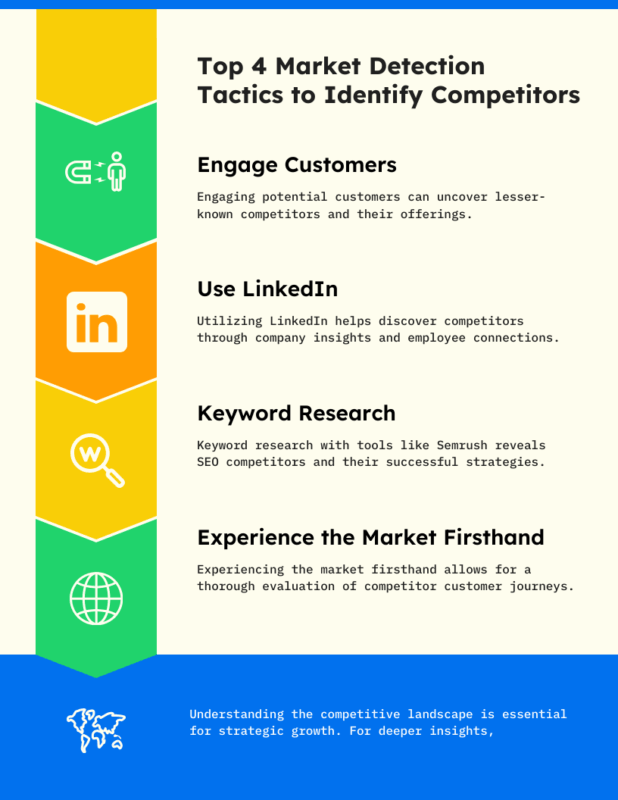
1. Engage Potential Customers for Insights
Start by talking to your target audience. Ask them which brands or businesses they currently use for similar products or services. These conversations often reveal competitors you might not have considered. Direct feedback from potential customers provides unfiltered insights into market preferences and competitor names.
2. Use LinkedIn to Discover Similar Companies
LinkedIn is a powerful platform for competitor research. By exploring company profiles, you can identify businesses with similar offerings. For example, use LinkedIn to see how many employees a competitor has and gauge their operational scale. This data can also help estimate a competitor’s revenue and market presence.
3. Conduct Keyword Research with Tools Like Semrush
Keyword research tools are essential for uncovering competitors’ online strategies. A tool like Semrush can highlight the keywords your competitors rank for, offering a glimpse into their target audience and content priorities. For instance, a free Semrush trial provides deeper insights into the keywords most relevant to your competitors’ target searches. This step not only reveals direct competitors but also identifies niche players in your industry.
4. Experience the Market Firsthand
Sometimes, the best way to discover competitors is by becoming a customer yourself. Explore the purchasing process, customer service, and overall experience offered by other businesses in your space. This hands-on approach uncovers hidden competitors and provides a deeper understanding of their strengths and weaknesses.
Conducting a Comprehensive Competitive Analysis for Strategic Positioning
Understanding your competitors is the cornerstone of effective strategic positioning. A well-structured competitive analysis not only highlights market opportunities but also helps refine your approach to customer acquisition, product development, and overall business strategy. This section outlines a detailed process for building a competitor matrix, covering essential aspects such as business overview, go-to-market (GTM) strategies, product comparisons, and SWOT analysis.
Step 1: Create a Business Overview
Start by gathering foundational information about your competitors. This includes details like company size, location, target audience, and financial health. Tools like Crunchbase are invaluable for researching company funding rounds, revenue figures, and overall financial health. For example, you can use Crunchbase data to validate a competitor’s funding and approximate market valuation. This insight helps you understand their financial stability and growth potential, which are critical for assessing their long-term viability in the market.
Step 2: Analyze Go-to-Market (GTM) Strategies
Next, evaluate how your competitors acquire and retain customers. This involves studying their marketing channels, sales tactics, and customer engagement methods. Pay close attention to their digital presence, including social media campaigns, website traffic, and email marketing strategies. Identifying gaps or strengths in their approach can inform your own GTM strategy, ensuring you capitalize on opportunities they may have overlooked.
Step 3: Compare Product Offerings
A thorough comparison of product features and benefits is essential for understanding where your offerings stand relative to competitors. Create a side-by-side matrix that highlights key attributes such as pricing, functionality, user experience, and unique selling points. This exercise not only reveals areas where your product excels but also pinpoints features that may need improvement to stay competitive.
Step 4: Conduct a SWOT Analysis
Finally, execute a comprehensive SWOT analysis for each competitor. This involves identifying their strengths, weaknesses, opportunities, and threats. For example, a competitor with strong funding might have the resources to scale quickly, but they may lack customer loyalty, presenting an opportunity for you to differentiate.
Keep Your Analysis Dynamic
Competitor analysis is not a one-time activity. It should evolve as market conditions and competitor strategies change. Treat it as a living document, revisiting and updating your SWOT analysis regularly to account for competitor pivots or emerging trends. This ongoing approach ensures your strategic positioning remains relevant and effective over time.
Essential Sources for Gathering Competitor Insights
Understanding how to do competitor analysis begins with identifying reliable sources of information. Publicly available platforms offer a wealth of data that can help you decode your competitors’ strategies and performance.
1. LinkedIn: A Window into Organizational Structure
LinkedIn is a powerful tool for uncovering insights about your competitors’ workforce, hiring trends, and leadership updates. By analyzing employee profiles, you can gauge the skills they prioritize and the roles they are actively expanding. This information can help you refine your own talent acquisition and operational strategies.
2. Crunchbase: Tracking Business Growth
Crunchbase provides detailed profiles of companies, including funding rounds, partnerships, and acquisitions. It’s an excellent resource for understanding how competitors are scaling and where they’re investing resources. For example, if a competitor secures significant funding, it might signal plans for aggressive market expansion.
3. Customer Reviews: Honest Feedback from the Market
Platforms like Google Reviews, Yelp, and Trustpilot offer unfiltered customer opinions. These reviews reveal what customers appreciate or dislike about your competitors’ products or services. Such insights can guide your product development and customer service improvements.
4. Glassdoor: Employee Sentiments and Culture
Glassdoor is invaluable for understanding a competitor’s internal culture and employee satisfaction. Reviews often highlight operational strengths and weaknesses, providing a competitor analysis example of how internal dynamics can influence external performance.
Publicly available data is not just accessible—it’s actionable. By systematically analyzing these sources, you can uncover trends, identify gaps, and make informed decisions to strengthen your competitive position.
Using Competitor Analysis for Strategic Decision-Making
Competitive analysis is more than just gathering data—it’s about turning insights into actionable strategies that drive growth. By understanding your competitors, you can refine internal decisions, craft compelling investor pitches, and establish a system for ongoing monitoring to stay ahead in the market.
1. Driving Internal Decisions
Insights from competitor research can directly inform critical business decisions. For example, analyzing pricing models or marketing strategies allows you to adjust your own approach to better align with market demands. Recruitment strategies can also benefit from competitor analysis; identifying gaps in their teams can help you prioritize hiring for roles that give you a competitive edge.
2. Integrating Insights into Investor Pitch Decks
A well-informed pitch deck demonstrates not only your business’s strengths but also your awareness of the competitive landscape. Highlighting how your product or service fills gaps left by competitors can make your value proposition more compelling. Incorporating findings from competitor analysis ensures your pitch is tailored to address investor concerns, showing them why your company is uniquely positioned to succeed. Understanding the competitive landscape is essential for aligning your investor discovery strategy.
3. Targeting Investors More Efficiently
Competitor insights can reveal the types of investors backing similar businesses, helping you refine your outreach strategy. By identifying patterns in investor preferences, you can prioritize connections with those most likely to align with your vision. This targeted approach saves time and increases the likelihood of securing funding.
4. Maintaining Continuous Competitive Monitoring
Staying informed about competitor activities is not a one-time task—it’s an ongoing process. Regular monitoring ensures you’re prepared to adapt to market changes and seize opportunities as they arise. Utilizing tools for monitoring competitors keeps you informed and ready to respond effectively.
Competitor analysis is a powerful tool when operationalized correctly. By applying insights to internal strategies, investor outreach, and continuous monitoring, businesses can position themselves for sustained success.
How Competitor Insights Help You Expand
Understanding the competitive landscape is a critical step for businesses aiming to scale effectively. Insights gained from competitive analysis can serve as a foundation for strategic growth, enabling companies to refine their offerings, explore new markets, and strengthen investor pitches.
Informing Product Innovation
Competitor research often reveals gaps in existing products or services. By analyzing competitors’ strengths and weaknesses, businesses can identify opportunities to enhance their own offerings. For example, if a competitor’s product lacks a specific feature that customers frequently demand, integrating that feature into your product could provide a competitive edge.
Expanding into Untapped Markets
Market expansion becomes more strategic when informed by competitor intelligence. Studying where competitors thrive—or struggle—can highlight underserved regions or demographics. This approach ensures that businesses enter new markets with a clear understanding of customer needs and potential challenges.
Enhancing Investor Pitches
Investor confidence often hinges on a company’s ability to demonstrate awareness of its competitive environment. Insights from using competitive intelligence for growth can reveal untapped growth opportunities and strategies, making pitches more compelling. By showcasing how your business stands out in the market, you can position yourself as a high-potential investment opportunity.
Competitor insights are not just about understanding rivals—they’re about identifying actionable strategies that drive long-term success. For startups and established businesses alike, competitive analysis is a powerful tool for informed decision-making.
Analyzing and Creating Engaging Content
Understanding how competitors craft their content can provide valuable insights into market trends and audience preferences. A thorough competitor analysis example often reveals content gaps that your brand can fill, helping you stand out in a crowded digital space.
1. Identifying Content Trends Through Competitor Analysis
Analyzing competitors’ content allows you to spot recurring themes, popular formats, and emerging topics. For instance, if a competitor’s blog posts on industry innovations consistently perform well, it signals a growing audience interest in that area. Similarly, examining the types of content—such as videos, infographics, or case studies—can inform your strategy for diversifying content formats.
2. Uncovering Content Gaps
Competitor analysis also highlights areas they may have overlooked. For example, if competitors focus heavily on beginner-level guides, there may be an opportunity to create advanced resources for a more knowledgeable audience. These gaps can position your brand as a thought leader by addressing unmet needs.
3. Creating High-Quality, Engaging Content
Once trends and gaps are identified, the next step is crafting content that resonates with your audience. High-quality content not only fills gaps but also differentiates your brand. For example, incorporating storytelling or unique data insights can make your content more engaging and memorable compared to competitors.
Analyzing competitors’ content isn’t just about imitation—it’s about innovation. By understanding what works and what doesn’t, you can refine your strategy to create content that captures attention and drives results.
Market Research Tactics for Customer Acquisition
Competitor research offers a powerful lens to uncover gaps in the market and identify underserved customer segments. By analyzing competitor strategies, businesses can refine their approach to customer acquisition and improve targeting efforts.
1. Pinpointing Underserved Segments
Competitor data often reveals areas where customer needs are not fully addressed. For instance, analyzing product reviews or social media feedback can highlight recurring complaints or unmet expectations. These insights help businesses tailor their offerings to fill these gaps, positioning themselves as the preferred choice for overlooked audiences.
2. Benchmarking Customer Preferences
Studying competitors’ marketing campaigns and product positioning can provide valuable clues about customer preferences. For example, tracking which demographics respond most positively to a competitor’s promotions can guide your own segmentation strategy. This ensures your messaging resonates with the right audience.
3. Utilizing Competitor Pricing Models
Price sensitivity is a critical factor in customer acquisition. By evaluating competitor pricing structures, businesses can identify opportunities to offer better value or unique pricing tiers. This approach not only attracts price-conscious customers but also differentiates your brand in a crowded market.
Competitor research is not just about imitation; it’s about innovation. By understanding what competitors are doing—and what they’re not—you can uncover new opportunities to serve your target audience more effectively.
Applying Competitive Analysis Insights
Understanding how to do competitor analysis can transform how startups position themselves in crowded markets. By dissecting competitors’ strategies, startups can pinpoint unique selling propositions (USPs) and differentiators that resonate with their target audience. This process begins with identifying gaps in the market that competitors have overlooked or underutilized.
1. Discovering Market Gaps
Analyzing competitors’ offerings reveals areas where customer needs remain unmet. For example, if a competitor excels in product quality but struggles with customer service, a startup can focus on delivering exceptional support as its USP. Similarly, evaluating pricing models or distribution channels can uncover opportunities to innovate or streamline processes.
2. Crafting a Unique Value Proposition
Once gaps are identified, the next step is to align your startup’s strengths with these opportunities. Highlighting features or benefits that competitors lack—such as eco-friendly packaging or faster delivery—can help establish a distinct brand identity. The goal is to create a narrative that positions your startup as the solution customers didn’t know they needed.
Crafting a compelling startup unique value proposition helps you stand out in a crowded market. By clearly defining what sets your business apart, you can position yourself effectively against both direct and indirect competitors.
3. Turning Weaknesses into Strengths
Competitor weaknesses often serve as a roadmap for differentiation. For instance, if industry leaders rely heavily on outdated technology, adopting cutting-edge solutions can set your startup apart. Similarly, addressing common complaints in customer reviews can help refine your approach and build trust with potential clients.
By applying insights from competitive analysis, startups can not only stand out but also build a sustainable advantage in their industry. Identifying gaps, crafting USPs, and capitalizing on weaknesses are essential steps in this process.
Accessing Free Data and Emerging Trends for Small Businesses
Staying competitive in a dynamic market means leveraging free data and trend analysis tools for effective competitive analysis:
- Utilize Public Datasets: Use demographic and economic data from government agencies like the U.S. Census Bureau to understand your target markets.
- Leverage Google Trends: Explore search behavior to identify trending topics relevant to your industry.
- Access Industry Reports: Consult whitepapers and reports from organizations like Statista or trade associations to uncover key sector trends.
- Monitor Emerging Trends: Regularly track customer demand and technological innovations to adapt your strategies proactively.
- Cost-Effective Insights: Free resources provide clarity on market positioning and support informed decision-making without straining budgets.
Conclusion
A well-structured, narrative-driven pitch deck is essential for effectively communicating your business vision to investors. Throughout this blog, we’ve explored strategies to craft compelling presentations, emphasizing clarity, storytelling, and actionable insights. These elements not only capture attention but also build confidence in your business model.
To stand out in competitive markets, aligning your pitch deck with investor expectations is crucial. This approach ensures your message resonates, paving the way for meaningful connections and funding opportunities.
If you’re ready to elevate your investor outreach, we at Qubit Capital can assist with our Investor Discovery and Mapping service. Let us help you identify the right investors and refine your approach to maximize impact.
Key Takeaways
- Accessing free data and trend reports further strengthens your competitive edge.
- Regular competitive analysis helps uncover market gaps and informs strategic decisions.
- Utilizing tools like LinkedIn, Semrush, and Crunchbase provides actionable insights.
- A structured framework, including SWOT analysis, is essential for ongoing evaluation.
- Leveraging competitor insights can enhance investor pitches and marketing strategies.





